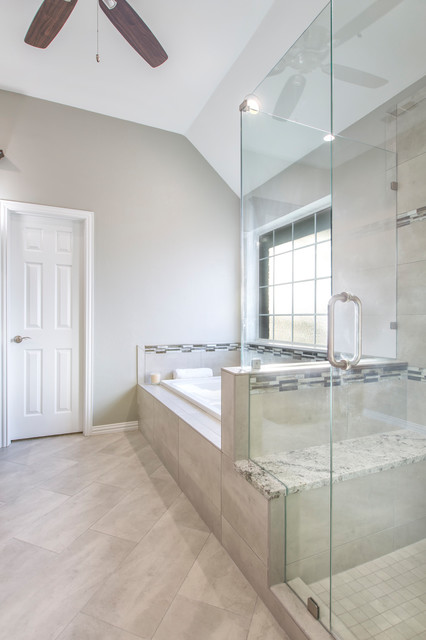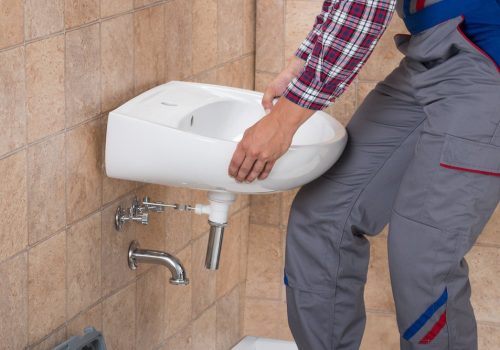The Future Awaits in Plumbing: Patterns and Innovations
The Future Awaits in Plumbing: Patterns and Innovations
Blog Article
Any individual is bound to have their own way of thinking involving The Future of Plumbing: Trends and Innovations to Watch.

Introduction
The pipes sector is going through a transformative phase driven by technological innovations and growing worries for sustainability and performance. This write-up discovers emerging trends and developments shaping the future of plumbing.
Governing Landscape
Regulative structures play a critical duty fit the adoption of pipes advancements, with criteria and codes regulating everything from water efficiency to item safety. As innovations continue to advance, regulatory bodies must adjust to ensure customer protection and environmental stewardship.
Future Expectation
The future of pipes is identified by proceeded development and assimilation with various other sectors such as IoT, renewable resource, and structure automation. By accepting lasting practices, leveraging arising modern technologies, and focusing on user-centric layout, the plumbing market is poised to address the developing needs of society while lessening its ecological footprint.
Increased Reality in Pipes
Increased Fact (AR) technology is transforming plumbing by supplying technicians with real-time aesthetic advice for fixing and fixing tasks. AR-enabled clever glasses or mobile applications overlay electronic details onto the physical environment, helping plumbings visualize pipeline formats, determine hidden leaks, and carry out repair work with accuracy.
Impact of 3D Printing
The advent of 3D printing has actually introduced new opportunities in making plumbing components. From custom-designed components to detailed pipe fittings, 3D printing permits fast prototyping and on-demand production, reducing preparations and allowing greater modification in pipes layout.
Health and Safety Characteristics
In feedback to heightened problems for health and safety, pipes fixtures are including functions such as antimicrobial surfaces, touchless procedure, and self-cleaning mechanisms. These advancements not just improve health yet likewise promote customer convenience and comfort.
Hygiene-focused Components
Touchless taps, self-sanitizing commodes, and antimicrobial surfaces are coming to be increasingly widespread in residential and industrial settings, reducing the danger of bacterium transmission and promoting a cleaner, much healthier setting.
Water Top Quality Tracking
Advancements in water top quality monitoring innovations make it possible for house owners to monitor the pureness and security of their water system in real-time. Smart water high quality sensing units can discover impurities, pH degrees, and temperature level variants, encouraging users to take proactive procedures to make sure water safety.
Remote Plumbing Services
Remote diagnostics and online support are revolutionizing the means pipes solutions are delivered. With video clip conferencing and remote accessibility modern technologies, plumbing professionals can repair concerns, give advice for do it yourself repairs, and even do remote examinations, offering better availability and benefit to homeowners.
Challenges and Opportunities
While pipes innovations hold immense promise, they additionally present difficulties such as information privacy concerns, governing conformity, and the requirement for workforce training. Resolving these difficulties requires partnership in between market stakeholders and regulatory bodies to make sure risk-free and liable execution of new technologies.
Smart Plumbing Equipments
Incorporating smart innovation into plumbing systems allows remote monitoring, leak detection, and automated upkeep. Smart sensing units and IoT (Internet of Points) gadgets allow house owners and plumbing technicians to keep an eye on water usage and detect issues in real-time, bring about a lot more efficient resource monitoring and positive upkeep.
Water Performance Solutions
With enhancing emphasis on water conservation, ingenious options are being developed to reduce water wastage in pipes systems. High-efficiency fixtures, greywater recycling systems, and clever watering controllers are amongst the modern technologies helping customers decrease their water footprint while keeping convenience and comfort.
Lasting Materials
The change towards sustainability encompasses plumbing materials, with an expanding choice for environment-friendly options. Naturally degradable piping products, such as PEX (cross-linked polyethylene) and HDPE (high-density polyethylene), offer longevity and resistance to rust without jeopardizing environmental stability.
Predictive Upkeep
Predictive maintenance techniques leverage data analytics and machine learning algorithms to expect and prevent pipes issues prior to they take place. By examining historic information and performance metrics, anticipating upkeep algorithms can determine patterns and abnormalities, allowing proactive interventions to prevent costly fixings and disruptions.
Conclusion
To conclude, the future of pipes is defined by a merging of modern technology, sustainability, and user-centric style. By welcoming clever services, sustainable materials, and aggressive maintenance techniques, the pipes sector can improve efficiency, advertise safety, and contribute to an extra lasting future.
The Future of Plumbing: Trends and Innovations to Watch
Introduction to Future Plumbing Trends
The future of plumbing is being shaped by several key factors, including technological advancements, environmental concerns, and changing consumer expectations. These factors are driving the development of new products, services, and practices that enhance the efficiency, sustainability, and convenience of plumbing systems.
Key Trends and Innovations in Plumbing
Smart Plumbing Systems: The integration of smart technology into plumbing systems is transforming the way we manage water usage and detect issues. Smart leak detectors, automated water shut-off valves, and smart faucets are just a few examples of how technology is enhancing plumbing systems. These devices provide real-time data and remote control capabilities, allowing homeowners to monitor and manage their water usage more effectively. Water Conservation and Efficiency: With increasing concerns about water scarcity, there is a growing emphasis on water conservation and efficiency. Innovations such as low-flow fixtures, greywater recycling systems, and rainwater harvesting are becoming more popular. Plumbers are adopting these technologies to help customers reduce their water consumption and save on utility bills. Sustainable Materials: The use of sustainable materials in plumbing systems is gaining traction. This includes the adoption of recyclable and biodegradable materials, as well as the use of non-toxic and eco-friendly products. Sustainable materials help reduce the environmental impact of plumbing systems and promote long-term sustainability. Energy-Efficient Water Heaters: Advances in water heating technology are leading to the development of more energy-efficient systems. Tankless water heaters, solar water heaters, and heat pump water heaters are becoming more prevalent. These systems offer significant energy savings and reduce the carbon footprint of homes and businesses. Trenchless Technology: Trenchless technology is revolutionizing the way plumbing repairs and installations are conducted. This method allows for the repair or replacement of pipes without extensive excavation, minimizing disruption and reducing costs. Techniques such as pipe bursting and cured-in-place pipe (CIPP) lining are gaining popularity. Health and Safety: The focus on health and safety is driving innovations in plumbing systems. Touchless faucets and fixtures, antimicrobial materials, and improved water filtration systems are being developed to enhance hygiene and protect public health. Plumbers are adopting these innovations to meet the growing demand for safer and healthier plumbing solutions. Remote Diagnostics and Monitoring: The ability to diagnose and monitor plumbing systems remotely is becoming increasingly important. Remote diagnostic tools and sensors allow plumbers to identify issues and perform maintenance without the need for on-site visits. This enhances efficiency and reduces the need for costly emergency repairs. Impact of Future Trends on the Plumbing Industry
Enhanced Efficiency: The adoption of smart technology and energy-efficient systems will enhance the efficiency of plumbing systems. This will lead to reduced water and energy consumption, lower utility bills, and improved performance. Sustainability: The focus on sustainability will drive the development and adoption of eco-friendly plumbing solutions. This will contribute to the conservation of natural resources, reduction of waste, and protection of the environment. Improved Customer Experience: The integration of technology and innovative solutions will improve the customer experience. Homeowners will have greater control over their plumbing systems, access to real-time data, and the ability to manage their water usage more effectively. Increased Demand for Skilled Plumbers: The adoption of new technologies and materials will require plumbers to acquire new skills and expertise. There will be an increased demand for skilled plumbers who are knowledgeable about the latest trends and innovations. Cost Savings: The use of efficient and sustainable plumbing solutions will result in cost savings for both homeowners and businesses. Reduced water and energy consumption, lower maintenance costs, and fewer emergency repairs will contribute to overall affordability. Preparing for the Future of Plumbing
Stay Informed: Keep up-to-date with the latest trends and innovations in the plumbing industry. Attend industry conferences, participate in training programs, and engage with manufacturers to stay informed. Invest in Training: Ensure that you and your team are trained in the latest technologies and installation techniques. This will enable you to offer cutting-edge solutions to your customers and stay competitive in the market. Promote Sustainable Solutions: Highlight the benefits of eco-friendly and energy-efficient plumbing solutions to your customers. Educate them about the advantages of adopting sustainable practices and products. Leverage Technology: Embrace smart technology and remote diagnostic tools to enhance your services. Offer remote monitoring and maintenance options to provide added convenience and value to your customers. Collaborate with Manufacturers: Partner with manufacturers of innovative plumbing products to gain access to the latest solutions and technical support. This can also provide opportunities for joint marketing efforts. Focus on Customer Education: Educate your customers about the benefits and functionality of new plumbing technologies. Provide guidance on how to use smart systems and maintain sustainable plumbing solutions. Conclusion
The future of plumbing is being shaped by exciting trends and innovations that promise to enhance efficiency, sustainability, and convenience. By staying informed and embracing these changes, plumbers can provide superior services to their customers and contribute to a more sustainable future. The adoption of smart technology, sustainable materials, and energy-efficient systems will drive the evolution of the plumbing industry, creating new opportunities and challenges. By preparing for the future, plumbers can ensure their success in a rapidly changing market.

Hopefully you enjoyed our part about Innovative Plumbing Trends Transforming Construction. Thank you so much for finding the time to read through our article post. Enjoyed our entry? Please share it. Help others check it out. I recognize the value of your readership.
Click Here Report this page